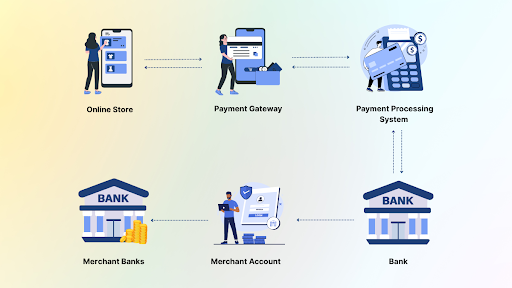Introduction
India’s Educational Institutions are rapidly upgrading how they collect fees. With omnichannel systems, institutions are replacing cash counters and spreadsheets with smarter, faster tools. From automated reminders and UPI links to real-time dashboards and instant reconciliation, these platforms are helping reduce admin work, improve collections, and make payments easier for parents.
Educational Institutions in India that switch to a digital, omnichannel fee management system collect fees up to 30% faster, reduce manual work by 90%, and offer parents more choices like UPI and wallet payments, now capped at ₹5 lakh per transaction.

Why Fee Collection Needs to Evolve
In 2024, India saw over 17,220 crore UPI transactions totalling ₹246.8 lakh crore, a 35% jump in value from the previous year.
To match this shift, the RBI raised the UPI limit to ₹5 lakh for education-related payments. This means parents can now pay large tuition or hostel fees via UPI.
Despite this progress, many schools still use cash counters, challans, or Excel sheets. This causes:
- Missed or duplicate entries
- Delays in reconciling payments
- Unhappy parents waiting in long queues
The solution? A School Fee Management System.
What Is a School Fee Management System?
A School Fee Management System (FMS) is a software solution, usually cloud-based, that automates the entire process of fee collection. It helps schools:
- Create invoices
- Accept payments via UPI, cards, EMI, net-banking, wallets
- Send automatic reminders
- Update ledgers instantly
- Reconcile records with the school’s ERP
Who Benefits?
- School Admins: No manual paperwork, better tracking
- Finance Teams: Auto-posting to accounting tools like Tally or SAP
- Parents: Pay anytime, download receipts instantly
- Students: No queues, can pay in instalments or via BNPL
Key Features of a Good Fee Management System
The best fee management systems go beyond just collecting money; they simplify processes, improve parent satisfaction, and give schools better control. From GST-compliant receipts and multi-payment support to real-time reports, reminders, and ERP integration, here’s what to look for.
Benefits for Everyone Involved
For Schools
- 25–30% faster fee collection
- 50% reduction in admin workload
- Saves on stationery, printing, and manual hours
- Fully audit-ready (CBSE, NAAC) and PCI-DSS 4.0 compliant
For Parents
- Flexible modes: UPI, EMI, BNPL, wallets
- Get instant SMS/email updates
- Download 80G receipts for tax saving
For Auditors and Regulators
- Transparent logs
- Maker–checker approval flows
- Matches Section 44AB audit requirements
- Supports NEP 2020 digitization mandates
Common Pain Points Solved
Manual entries, late payments, and endless reconciliations- here’s how digital platforms solve the real challenges schools face every day.
| Manual errors, duplicate entries | Auto-calculation ensures accuracy |
| Visibility of unpaid dues | Dashboards + reminders reduce late payments by up to 21% |
| Offline vs online tracking | Combines QR, PoS, and online receipts into one view |
| Delayed reconciliation | Automated T+1 reports vs 7-day manual bank reconciliations |
Omnichannel vs Traditional Fee Collection
The way schools collect fees is changing fast. Here’s how omnichannel platforms stand apart from old-school methods.
| Criteria | Traditional (Cash/Challan) | Omnichannel Fee Management System |
|---|---|---|
| Payment modes | Cash, DD, NEFT | UPI, cards, wallets, EMI, BNPL |
| Parent experience | Manual, long queues | 24×7 digital payments, instant e-receipts |
| Reconciliation | Weekly and manual | Real-time, automated |
| Data security | Vulnerable paper files | PCI-DSS 4.0, tokenization |
| Collection speed | 3–7 days | Same-day or next-day settlements |
Unlike multichannel setups that work in silos, an omnichannel system unifies every mode into one platform, simplifying the parent experience and backend reconciliation.
Who Should Use a Fee Management System?
Fee systems aren’t just for large institutions. From schools and ERPs to NGOs and government programs, many can benefit.
- K-12 Schools (CBSE, ICSE, State Boards)
- Colleges and Universities
- Hostels, coaching centres, and vocational institutes
- Government and NGO bodies handling scholarships
- EdTech firms and ERP providers offering fee collection tools
What to Look for When Choosing a System
Must-Have Features
- Custom templates for different classes, boards, or scholarships
- Support for large UPI payments (₹5 lakh limit)
- Analytics dashboards for aging reports and concessions
- Smart reminders + e-receipts to cut default risk by up to 9%
- High security: PCI-DSS 4.0, RBI tokenization, ISO 27001
Why Security Matters
The education sector is the 2nd most targeted by ransomware attacks. A secure FMS protects school and parent data from breaches.
Final Thoughts
India is set to cross 130 billion digital transactions in 2025, with UPI leading the way.
Schools that don’t modernize risk:
- Cash flow delays
- Missed audit trails
- Growing dissatisfaction from digital-first parents
An omnichannel School Fee Management System helps schools:
- Collect fees faster
- Reduce manual errors
- Meet RBI and CBSE guidelines
- Integrate payments with ERP and EdTech tools
Frequently Asked Questions (FAQs)
What is a school fee management system?
A school fee management system is software that automates everything related to collecting fees from invoicing and payment tracking to real-time reporting and reconciliation.
How does it help parents?
It allows parents to pay online 24×7 using UPI, cards, wallets, or EMI. It also sends instant confirmations and downloadable receipts.
Is it safe to use digital payments for school fees?
Yes, a good FMS follows PCI-DSS 4.0 guidelines and uses secure tokenized transactions, keeping parent and school data safe
Can schools collect fees through UPI using the Fee Management System?
Yes. Most modern systems support UPI payments, including the new ₹5 lakh limit for education-related transactions.
How is an omnichannel fee system better than manual cash collection?
It saves time, reduces errors, supports multiple digital payment modes, and ensures quicker reconciliation with automated reports.





